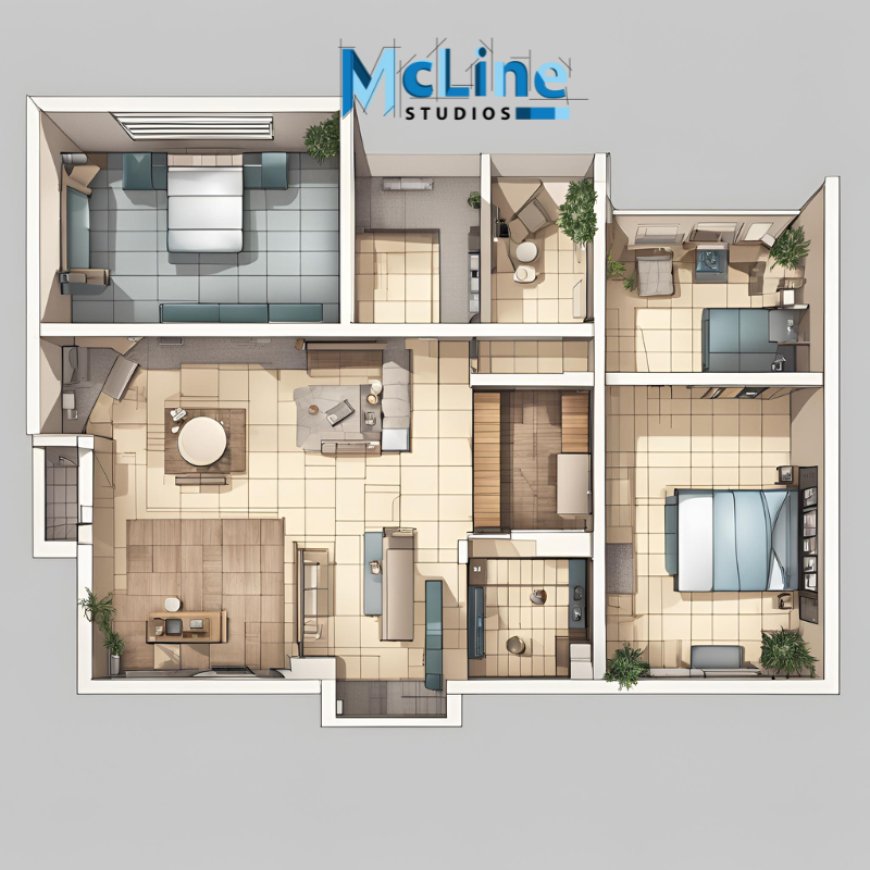How to Use Floor Plans for Space Planning and Layout Optimization
Floor plans serve as the blueprint for any design endeavor, allowing designers, architects, and homeowners to visualize spatial relationships, flow, and functionality.

In the world of design and architecture, the effective use of space can make or break a project. Whether you’re planning a residential renovation, designing a commercial office, or reimagining a retail space, understanding how to utilize floor plans for space planning and layout optimization is essential.
Floor plans serve as the blueprint for any design endeavor, allowing designers, architects, and homeowners to visualize spatial relationships, flow, and functionality.
This guide will delve into the key principles and techniques of using floor plans to maximize space efficiency and enhance usability.
We will explore how to assess your needs, consider the specific requirements of different areas, and incorporate design elements that facilitate an optimal layout.
By leveraging the power of floor plans, you can create environments that are not only aesthetically pleasing but also functional and adaptable to changing needs. Let’s unlock the potential of your space through strategic planning and design.
Understanding the Basics of Floor Plans
Floor plans are essential tools in architecture and design. They show how spaces are arranged within a building. A floor plan is a simple drawing from a top view, helping people visualize the layout of rooms and how they connect.
Typically, a floor plan includes walls, doors, windows, and other features like furniture. Each room is labeled, such as “kitchen,” “living room,” or “bathroom.” This helps anyone looking at the plan to understand what each space is for.
When creating a floor plan, it’s important to consider the flow of movement. For example, the kitchen should be near the dining area for convenience. Good floor plans also take into account natural light, privacy, and functionality.
Floor plans come in different scales, which means they can be drawn to show a small area or a whole building. They can be hand-drawn or created using software. Many people use floor plans when building a new home or renovating an existing one.
Assessing Space Requirements
Assessing space requirements is a crucial step in any design or renovation project. It involves understanding how much space is needed for various activities and ensuring that the layout meets those needs. To start, consider the purpose of the space. Is it for living, working, or storing items? Each function has different requirements.
Next, think about the number of people who will use the space. For example, a family room for four people needs more seating and room to move than a study for one person. It’s important to plan for comfort, allowing enough space for everyone to feel relaxed and not crowded.
Also, consider the size and dimensions of furniture and equipment. Measure items you plan to include, like sofas, desks, and tables. This ensures they will fit comfortably within the space without blocking walkways or making the area feel cramped.
Besides, don’t forget about storage. Having enough storage space can help keep areas organized and functional. Think about closets, cabinets, and shelves that can accommodate your belongings without overwhelming the room.
Lastly, visualize how the space will flow. Walk through the area in your mind, imagining how people will move and interact. This can help identify any potential issues before they arise. By carefully assessing space requirements, you can create a well-designed environment that meets everyone’s needs.
Utilizing Floor Plans for Space Planning
Floor plans are essential tools in space planning, helping us visualize how to use a space effectively. A floor plan is a simple drawing that shows the layout of a room or building from above. It displays walls, doors, windows, and furniture placement, making it easier to plan how to use the available space.
When creating a floor plan, consider the purpose of each room. For example, a living room should be welcoming and comfortable, while a kitchen needs to be functional and efficient. By sketching a floor plan, you can experiment with different furniture arrangements and designs before making any changes in real life.
One of the main benefits of using floor plans for space planning is that they help you avoid overcrowding. By planning where furniture and appliances will go, you can ensure there is enough room for movement and daily activities. Additionally, floor plans can highlight areas that might need extra storage or better lighting, helping to create a more organized and pleasant environment.
In residential spaces, floor plans can also help with renovation projects. By understanding how the layout affects the flow of a home, you can make informed decisions about walls to remove or spaces to expand.
Layout Optimization Techniques
Layout optimization is essential for making the most of a space, whether in architecture, interior design, or manufacturing. It focuses on arranging elements in a way that improves efficiency and functionality. Here are some effective techniques for optimizing layouts:
1. Identify Key Areas: Start by determining the most important areas in your space. For example, in a kitchen, the cooking area, storage, and prep zones should be easily accessible to create a smooth workflow.
2. Use Space Wisely: Consider using vertical space for storage. Shelves and cabinets that reach the ceiling can help keep items organized while freeing up floor space. This approach is especially helpful in small areas.
3. Flow and Accessibility: Ensure that there is a natural flow to the layout. Paths between different areas should be clear and not blocked by furniture or obstacles. This is important for both comfort and safety.
4. Flexible Design: Incorporate furniture or fixtures that can serve multiple purposes. For example, a sofa bed can provide seating and sleeping space in a small living area.
5. Feedback and Testing: After making changes, gather feedback from users or occupants of the space. Observing how they interact with the layout can highlight areas for further improvement.
Conclusion
In conclusion, effectively utilizing floor plans for space planning and layout optimization is crucial in creating functional and aesthetically pleasing environments. By understanding the basics of floor plans and assessing space requirements, designers can ensure that every area serves its intended purpose while accommodating the needs of its users.
Utilizing floor plans allows for strategic planning, enabling the exploration of various arrangements and identifying potential issues before they arise.
Applying layout optimization techniques further enhances the efficiency of a space, promoting comfort, accessibility, and organization.
By incorporating elements like multi-functional furniture and leveraging vertical space, one can maximize the utility of available areas. Continuous feedback and adjustments based on user interaction ensure that the design remains adaptable to changing needs.
What's Your Reaction?



















